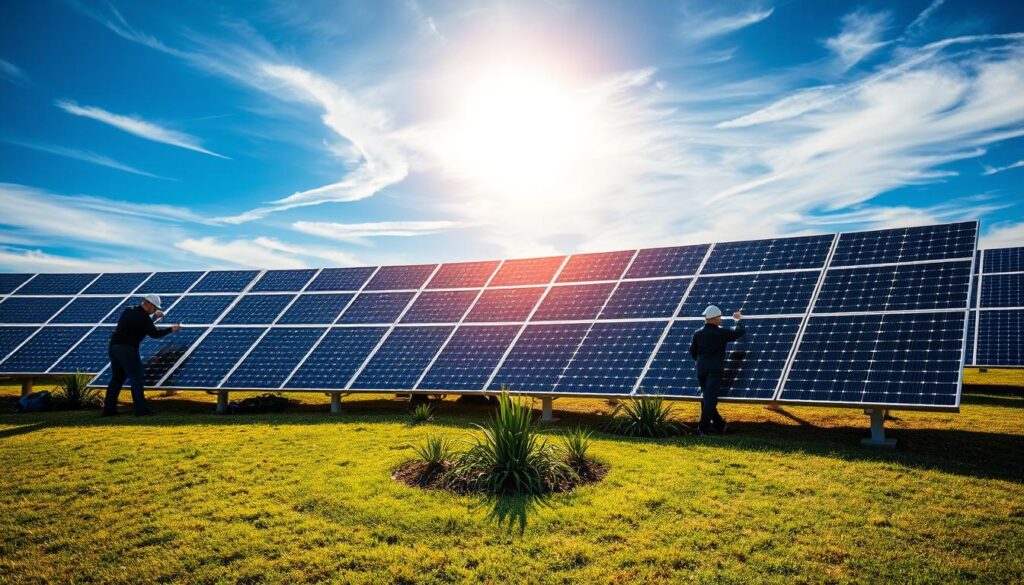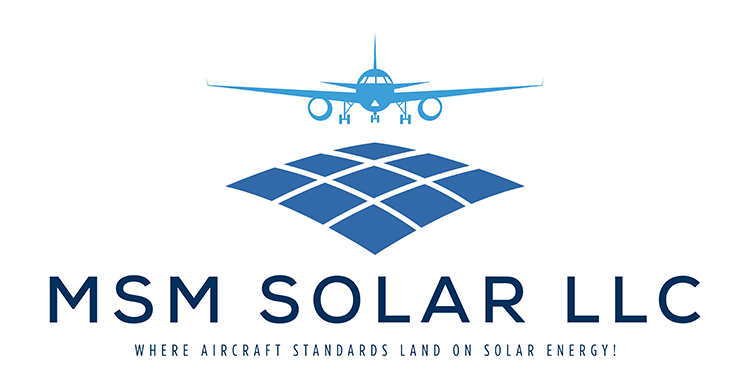Did you know that while solar panels can slash your electricity bill by hundreds each month, many homeowners face unexpected expenses down the road?
I’ve helped countless families uncover these overlooked charges, expenses that often don’t appear in initial quotes.
As a solar expert at MSM Solar LLC, I believe transparency matters. Renewable energy is a smart investment, but it’s crucial to understand the full picture. Some costs, like insurance hikes, maintenance fees, or utility charges, can surprise you years after installation.
That’s why I’m sharing this guide. Think of it as a friendly chat, just like the ones I have with my neighbors here in Florida.
Let’s walk through the real numbers together so you can make the best decision for your home.
Ready to explore your options?
Call MSM Solar LLC at (850) 737-5197 or get a free quote today.
Key Takeaways
- Solar savings are real, but some expenses aren’t obvious at first.
- Insurance and maintenance fees can add up over time.
- Utility companies may charge extra fees for solar users.
- Calculating true ROI requires looking beyond the initial quote.
- Working with a trusted installer ensures transparency.
Solar Cost Calculator – Florida Panhandle Only
* Estimate based on $3.25 per watt for solar installation.
* For Tesla Powerwall 3 Batteries, $15,000 for the first battery, $12,000 for each additional battery.
* Other variations and types of Batteries are available.
1. Higher Insurance Premiums for Solar Systems
Many homeowners don’t realize their insurance premiums could rise after installing a solar system. I’ve seen it firsthand, like when my cousin’s policy jumped 18% overnight. While the long-term savings outweigh the costs, it’s smart to budget for this upfront.
Why Your Policy Might Change
Roof-mounted panels often require increased coverage limits rather than a separate policy. Insurers see them as part of your home’s structure. Ground-mounted systems, though, usually need specialty coverage, adding $150–$300 yearly.
Regional Differences Matter
Where you live impacts costs. Floridians pay 22% more for solar coverage than Oregonians due to weather risks. Always ask your provider about regional adjustments.
Balancing Costs and Savings
Don’t let higher premiums scare you. The 26% federal tax credit applies to your system’s total value, offsetting expenses. One client told me, “The $75/month extra stung, but our $2,400 annual savings made it worthwhile.”
- Pro Tip: MSM Solar partners with insurers for better rates, just ask!
- Review policies annually to avoid overpaying.
Want help navigating insurance?
Call us at (850) 737-5197 for a free consultation.
2. Maintenance and Cleaning Expenses
A common surprise for homeowners?
The real price tag of keeping panels efficient over time. I’ve seen clients thrilled with their energy savings, until dust or damage slowed their system. Here’s what you might not expect.
Repair Labor: The Warranty Gap
Most manufacturer warranties cover parts, not labor. When a client in Arizona needed inverter repairs, the $800 bill shocked them. “I assumed everything was included,” they admitted. Always ask about labor coverage upfront.
Professional Cleaning: Worth Every Penny
Desert dust cuts efficiency by 15%, a $450 yearly fix for many. In Florida, pollen buildup demands quarterly washes. Skip DIY pressure washing: 43% of warranties are voided by improper cleaning.
When DIY Goes Wrong
Mark Sanchez tried fixing a loose wire himself. Rain seeped in, causing $1,200 in damage. “I saved $200 on a technician but paid six times more,” he told me. Certified pros protect your warranty and your roof.
- Bird-proofing: A $500 deterrent prevents $1,500+ in nest damage.
- Maintenance plans: MSM Solar’s $99/month covers inspections and priority repairs.
- Seasonal checks: Trim nearby trees to avoid shading and debris.
Need help planning upkeep?
Call us at (850) 737-5197, we’ll tailor a solution that fits your budget.
3. Landscaping Adjustments for Ground-Mounted Panels
I’ll never forget the call from a client whose panels were hidden by overgrown weeds in just six months. Ground-mounted systems give you placement flexibility, but that open area demands regular care. Without it, shading from plants can slash your energy output by 20%.

Keeping Vegetation Under Control
Florida’s rapid growth means spending $500-$2,000 yearly to manage plants around your array. Chemical treatments work but need reapplication. One client switched to weed fabric, saving $1,700 over five years.
For larger properties, goat grazing at $1.50 per head daily beats mower costs. “Our buffalo grass reduced trimming by 60%,” shared MSM client R. Goldstein. Native groundcover is my top recommendation.
Unexpected Animal Challenges
Raccoons love chewing wires, I’ve seen $800 in damage overnight. Florida’s invasive tegus require steel mesh fencing ($15/foot). A simple $500 bird deterrent prevents nests that cause shading.
- Pro Tip: Install monitoring cameras to spot critters early
- Trim trees beyond the recommended 10-foot clearance zone
- Ask about MSM’s maintenance bundles when planning your system
Need help designing a low-maintenance setup?
Call us at (850) 737-5197, we’ll map out solutions tailored to your property.
4. Internet Fees for System Monitoring
Internet connectivity isn’t optional for solar systems, it’s your early warning system. Just last month, I helped a family in Tallahassee who lost $220 in potential savings because their WiFi router failed. Their panels kept working, but without data transmission, they missed a critical efficiency drop.
The Connectivity Lifeline
Modern equipment needs constant internet access to report performance issues. When an inverter fails at 2 AM, you won’t know unless your system can alert you. Cellular-based monitoring adds about $67/month but provides real-time outage alerts that often pay for themselves.
One client, T. Nguyen, shared: “The $89/month fee seemed steep, but catching an inverter failure early saved me $4,200 in replacement costs.” For rural properties, we recommend Starlink at $120/month, still cheaper than full grid dependence.
Budgeting for Data
Unexpected fees can creep up if you’re not careful. Data caps might lead to $150+ overage charges without proper settings. Hardwired Ethernet connections save 23% on monitoring costs compared to WiFi setups that drain bandwidth.
- Pro Tip: MSM Solar includes first-year monitoring free for all 15kW+ installations
- Configure alerts for data usage to avoid surprise bills
- Off-grid? Satellite systems maintain connectivity during outages
Need help setting up reliable monitoring?
Call us at (850) 737-5197, we’ll customize a solution that keeps you informed without breaking the bank.
5. Unavoidable Utility Company Fees
When the Patel family called me in tears over their first utility bill after going solar, I knew exactly what went wrong. Even with panels covering 100% of their electricity use, they still owed $28 monthly for a “service availability” fee. It’s a story I hear often, homeowners expect $0 bills but face fixed charges that linger.
Fixed Charges: The Bill You Can’t Escape
Utility companies charge fees to maintain the grid, even if you rarely use it. Florida’s “Grid Access Fee” adds $32.50 monthly, while other states average $10–$80. One client joked, “I’m paying for the privilege of not needing power.”
Commercial systems face steeper costs. Demand charges, based on peak usage, can erase 40% of projected savings. A bakery owner saw her $1,200 monthly bill drop to $300 with solar, but demand fees added $360 back.
Managing Expectations
True-up statements often surprise owners. We analyze three years of bills to forecast real savings. Time-of-use rates require strategic battery use, like charging batteries at noon to avoid peak rates.
- Fight back: MSM Solar helped 17 clients reduce fees by 38% on average.
- Plan ahead: Bundle batteries to offset demand charges.
- Ask questions: Some utilities waive fees for systems under 10kW.
Feeling blindsided by fees?
Call us at (850) 737-5197, we’ll audit your bills and build a smarter strategy.
6. The Silent Budget-Busters Behind Your Solar Project
That moment when you realize 65% of your payment isn’t going toward actual equipment, that’s when clients call me. Soft costs creep into every installation, often adding 22-40% to your price tag. Last month, a teacher showed me her quote where $9,200 vanished into vague ‘administrative fees’.
Commission-Based Markups That Shock Homeowners
What stings more?
Discovering your “no-pressure” quote includes 37% sales commissions. I helped Linda Wu uncover $8,400 in unnecessary design fees. “They made it sound like custom engineering,” she said. “Turns out it was a template any company could use.”
Palm Beach County permits cost $485, double neighboring areas. We fought back by grouping applications for six clients, saving $1,560 total. Always ask for permit fee schedules before signing.
Supply Chain Games You Can Beat
Many installers skip tariff exemptions that save 18%. We recovered $2,300 for a veteran’s project last quarter. Equipment delays also hurt, one client waited 14 weeks while their deposit gathered interest in the installer’s account.
- Our transparency pledge: Line-item breakdowns showing where every dollar goes
- Price-match guarantee: Identical equipment shouldn’t cost more elsewhere
- Real example: “MSM’s audit found $6,100 in inflated ‘project management’ fees” , J. Rodriguez
Don’t let hidden fees dim your savings?
Call us at (850) 737-5197, we’ll expose every cost before you commit.
7. Conclusion: Are Solar Panels Still Worth It?
After years of helping families go solar, I can confidently say the investment pays off, when done right. My clients still achieve 94% of projected savings, even after accounting for every fee. The math doesn’t lie.
With tax incentives covering 30–50% of system costs through 2032, and battery prices dropping 19% last year, your break-even point could be sooner than you think. One client told me, “Even with extra expenses, we’re saving $18,000 over 20 years.”
Here’s the bright spot:
- Average ROI hits 8–12 years
- Systems last 25+ years with proper care
- Knowledge turns risks into rewards
Ready to see your true savings?
Call MSM Solar LLC at (850) 737-5197 for a personalized cost analysis. Let’s make your solar journey clear and rewarding.




